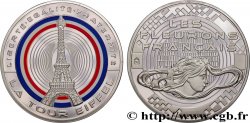v15_0392 - HOARD OF BRIDIERS (CREUSE) Drachme de Bridiers
MONNAIES 15 (2002)
Starting price : 350.00 €
Estimate : 1 200.00 €
Realised price : 525.00 €
Number of bids : 5
Maximum bid : 755.00 €
Starting price : 350.00 €
Estimate : 1 200.00 €
Realised price : 525.00 €
Number of bids : 5
Maximum bid : 755.00 €
Type : Drachme de Bridiers
Date: c. 80-60 AC.
Metal : silver
Diameter : 19 mm
Orientation dies : 9 h.
Weight : 4,38 g.
Rarity : R3
Coments on the condition:
Monnaie au droit de grande qualité, mais frappée avec un coin de revers bien usé
Catalogue references :
Predigree :
Monnaie provenant d’une ancienne collection constituée avant 1914, faisant certainement partie du Trésor de Bridiers
Obverse
Obverse legend : ANÉPIGRAPHE.
Obverse description : Tête d’Apollon à droite, laurée avec une couronne à six feuilles (A6 II).
Reverse
Reverse legend : ANÉPIGRAPHE.
Reverse description : Animal hybride dérivé du lion des drachmes de Marseille ; chaudron au-dessus ; à l’exergue, un épi.
Commentary
Le revers ne permet pas de distinguer la liaison de coin, mais il est de même type que l’exemplaire MAN 775. De même coin de droit que l’exemplaire BN 2252, illustré dans le LA TOUR, de même coins de droit que les exemplaires 772, 775, 778 et 785 du Musée des Antiquités Nationales. De mêmes coin de droit que l’exemplaire 987 de Zürich, ainsi que l’exemplaire précédent, MONNAIES XV, n°390..








 Report a mistake
Report a mistake Print the page
Print the page Share my selection
Share my selection Ask a question
Ask a question Consign / sell
Consign / sell






